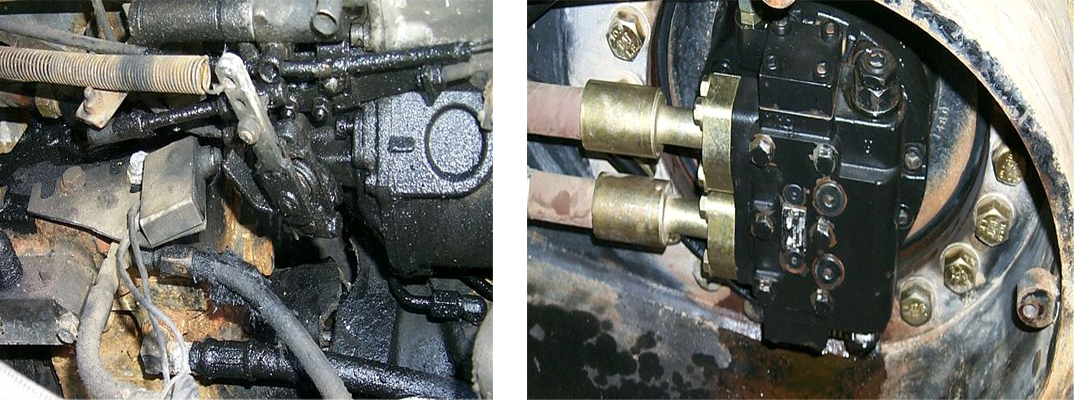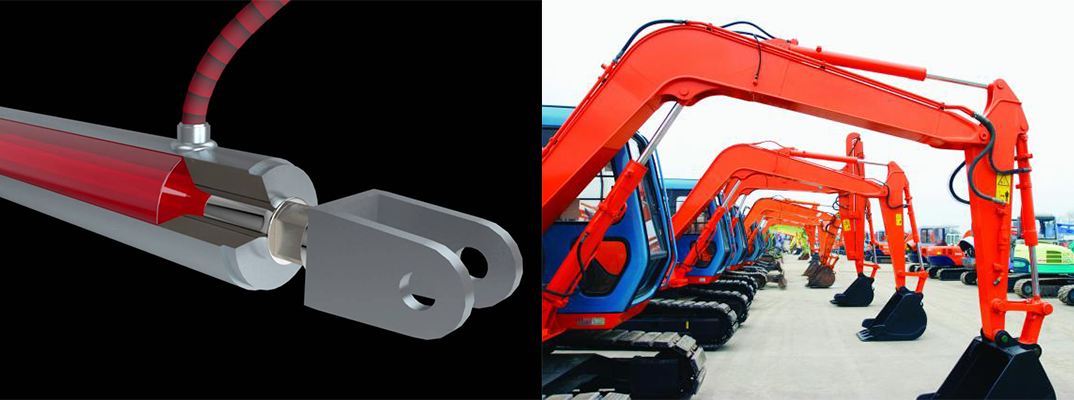- All
- Product Name
- Product Keyword
- Product Model
- Product Summary
- Product Description
- Multi Field Search
Views: 26 Author: Site Editor Publish Time: 2019-08-26 Origin: www.fuchun-casting.com
In the daily use of machinery, we must pay attention to observe the condition of the machine, especially the construction machinery. Most of the time, it is a minor problem that is not very noticeable. If it is not solved in time, it will become a major failure slowly.
Hydraulic system failure is a phenomenon that hydraulic components or systems lose their prescribed functions, also known as failure. The ultimate failure of hydraulic system is the damage of components in hydraulic system or circuit, accompanied by oil leakage, heating, vibration, noise and other phenomena, resulting in the system can not play its normal function.

Hydraulic failure mode describes hydraulic failure from different manifestations, which is a representation of hydraulic failure phenomena. Generally speaking, the objects of hydraulic failure are different, that is, different hydraulic components and hydraulic systems, and their hydraulic failure modes are different.
(1) Hydraulic failure modes of hydraulic cylinder include crawling, impact, leakage, insufficient thrust, unstable movement, etc.
(2) Hydraulic failure modes of hydraulic pumps are: no pressure, low pressure and flow rate, high noise, serious fever, etc.
(3) Hydraulic failure modes of electro-hydraulic reversing valve include: sliding valve can not move, electromagnet coil burned out, electromagnet coil leakage or magnetic leakage, electromagnet noise, etc.
Generally, any fault of hydraulic system of construction machinery will be accompanied by various abnormal symptoms before it can not function normally.
(1) Abnormal sound. For example, the sound of hydraulic pumps, hydraulic motors, hydraulic valves and other parts is abnormal.
(2) The operation speed of the actuator decreases or becomes weak.
(3) Oil leakage occurs on the external surface of hydraulic components.
(4) The oil temperature is too high.
(5) Pipeline damage, loosening and vibration occur.
(6) Appearance of burning smell.

This is where a batch of steel meets more than one specification or grade. It is a way of allowing melting shops to produce stainless steel more efficiently by restricting the number of different types of steel. The chemical composition and mechanical properties of the steel can meet more than one grade within the same standard or across a number of standards. This also allows stockholders to minimise stock levels.
For example, it is common for 1.4401 and 1.4404 (316 and 316L) to be dual certified - that is the carbon content is less than 0.030%. Steel certified to both European and US standards is also common.
There are many different types of surface finish on stainless steel. Some of these originate from the mill but many are applied later during processing, for example polished, brushed, blasted, etched and coloured finishes.
The importance of surface finish in determining the corrosion resistance of the stainless steel surface cannot be overemphasised. A rough surface finish can effectively lower the corrosion resistance to that of a lower grade of stainless steel.
Various types of stainless steel are used across the whole temperature range from ambient to 1100 deg C. The choice of grade depends on several factors:
In the European standards, a distinction is made between stainless steels and heat-resisting steels. However, this distinction is often blurred and it is useful to consider them as one range of steels.
Increasing amounts of Chromium and silicon impart greater oxidation resistance. Increasing amounts of Nickel impart greater carburisation resistance.
Austenitic stainless steels are extensively used for service down to as low as liquid helium temperature (-269 deg C). This is largely due to the lack of a clearly defined transition from ductile to brittle fracture in impact toughness testing.
Toughness is measured by impacting a small sample with a swinging hammer. The distance which the hammer swings after impact is a measure of the toughness. The shorter the distance, the tougher the steel as the energy of the hammer is absorbed by the sample. Toughness is measured in Joules (J). Minimum values of toughness are specified for different applications. A value of 40 J is regarded as reasonable for most service conditions.
Steels with ferritic or martensitic structures show a sudden change from ductile (safe) to brittle (unsafe) fracture over a small temperature difference. Even the best of these steels show this behaviour at temperatures higher than -100 deg C and in many cases only just below zero.
In contrast austenitic steels only show a gradual fall in the impact toughness value and are still well above 100 J at -196 deg C.
Another factor in affecting the choice of steel at low temperature is the ability to resist transformation from austenite to martensite.
It is commonly stated that “stainless steel is non-magnetic”. This is not strictly true and the real situation is rather more complicated. The degree of magnetic response or magnetic permeability is derived from the microstructure of the steel. A totally non-magnetic material has a relative magnetic permeability of 1. Austenitic structures are totally non-magnetic and so a 100% austenitic stainless steel would have a permeability of 1. In practice this is not achieved. There is always a small amount of ferrite and/or martensite in the steel and so permeability values are always above 1. Typical values for standard austenitic stainless steels can be in the order of 1.05 – 1.1.
It is possible for the magnetic permeability of austenitic steels to be changed during processing. For example, cold work and welding are liable to increase the amount of martensite and ferrite respectively in the steel. A familiar example is in a stainless steel sink where the flat drainer has little magnetic response whereas the pressed bowl has a higher response due to the formation of martensite particularly in the corners.
In practical terms, austenitic stainless steels are used for “non-magnetic” applications, for example magnetic resonance imaging (MRI). In these cases, it is often necessary to agree a maximum magnetic permeability between customer and supplier. It can be as low as 1.004.
Martensitic, ferritic, duplex and precipitation hardening steels are magnetic.